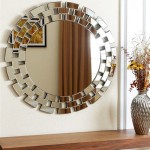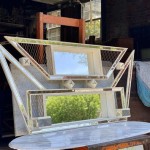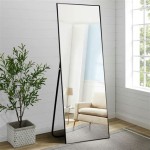Mirror Android Phone To Non-Smart TV
Mirroring an Android phone's screen to a non-smart TV opens up a world of entertainment possibilities, from sharing photos and videos with family and friends to enjoying mobile games on a larger display. While smart TVs offer built-in casting capabilities, non-smart TVs require external devices and a bit of setup. This article explores several effective methods for mirroring an Android phone to a non-smart TV.
Using an HDMI Cable
A wired connection using an HDMI cable offers a reliable and lag-free mirroring experience. This method requires an HDMI cable and an HDMI adapter compatible with the Android phone. MHL (Mobile High-Definition Link) and Slimport are common adapter types. Connect the adapter to the phone's charging port, then connect an HDMI cable from the adapter to an available HDMI port on the TV. Switch the TV's input source to the corresponding HDMI port. The phone's screen should then mirror on the TV.
Utilizing Chromecast
Google Chromecast is a popular streaming device that plugs into the TV's HDMI port. It creates a Wi-Fi connection with the Android phone, allowing users to cast content. Ensure both the Chromecast and the phone are connected to the same Wi-Fi network. Open a compatible app on the phone (e.g., YouTube, Netflix) and tap the cast icon. Select the Chromecast device from the list. The selected content will then stream on the TV. While Chromecast primarily streams content, some apps also support screen mirroring functionality.
Wireless Display Adapters (Miracast)
Miracast is a wireless display standard that allows screen mirroring between compatible devices. Miracast adapters plug into the TV's HDMI port and create a direct Wi-Fi connection with the Android phone. Enable screen mirroring in the phone's settings (often found under "Display," "Cast," or similar). The phone should detect the Miracast adapter. Select the adapter to initiate the connection. The phone's screen will mirror to the TV wirelessly.
Leveraging AllCast App
The AllCast app facilitates media streaming from an Android phone to various devices, including some smart TVs, gaming consoles, and Roku. Some smart TV platforms, while not directly supporting Android screen mirroring, might be compatible with AllCast. Install the AllCast app on the phone and ensure the target device is on the same Wi-Fi network. Open AllCast and select the desired content for streaming. Choose the target device from the list within the app. While not true screen mirroring, AllCast offers a convenient way to share photos, videos, and other media on a non-smart TV.
Employing DLNA Apps and Servers
DLNA (Digital Living Network Alliance) allows sharing media files across devices on a home network. A DLNA server app on the Android phone makes media files accessible to a DLNA-compatible media player connected to the TV. Several media players, including some Blu-ray players and gaming consoles, support DLNA. Install a DLNA server app on the phone. Ensure the DLNA media player is connected to the TV and on the same network as the phone. Access the shared media files on the TV through the media player interface. This method, while not mirroring the entire screen, allows for convenient media sharing on the larger screen.
Connecting with Roku
While Roku is commonly used with smart TVs, some Roku models offer screen mirroring capabilities for Android devices. Ensure the Roku device and the Android phone are connected to the same Wi-Fi network. Enable screen mirroring on the Roku device. On the Android phone, navigate to the screen mirroring settings (often labeled "Cast," "Wireless Display," or similar). Select the Roku device from the list of available devices. The phone's screen should then mirror to the TV through the Roku device. Note that not all Roku models support screen mirroring, so verifying compatibility is essential.
Using a Laptop as an Intermediary
A laptop can act as a bridge between the Android phone and the non-smart TV. Connect the laptop to the TV using an HDMI cable. Then, mirror the Android phone's screen to the laptop using a USB connection and screen mirroring software compatible with the phone's manufacturer (e.g., Samsung DeX, Your Phone Companion for Windows). This method effectively mirrors the phone's display on the laptop, which is then displayed on the TV through the HDMI connection. This approach requires additional hardware and software but provides a viable mirroring solution when other methods are not feasible.

How To Mirror Phone Non Smart Tv Very Easyly
Can I Mirror My Phone To A Non Smart Tv Using Usb Quora

How To Connect Phone Non Smart Tv Without Hdmi
How To Connect A Non Smart Tv With My Smartphone Quora

How To Mirror Phone On Non Smart Tv Chromecast Screen Mirroring Hindi
How To Connect A Non Smart Tv With My Smartphone Quora

How To Connect A Phone Non Smart Tv Wired Wireless Solutions Pointerer Com

How To Mirror Phone On Non Smart Tv Chromecast Screen Mirroring Hindi
How To Connect My Phone Non Smart Tv Without Wifi Quora

How To Connect Cellphone Non Smart Tv Screen








